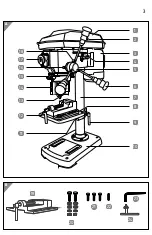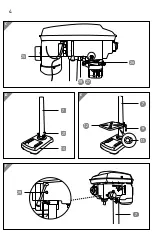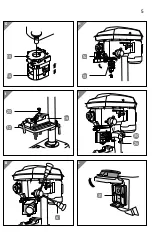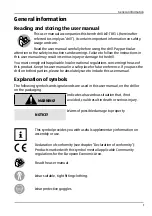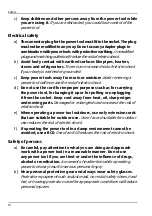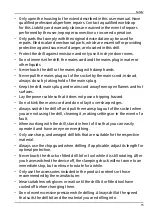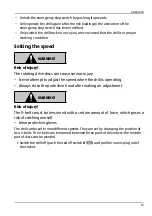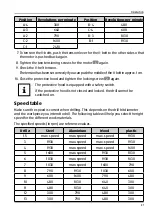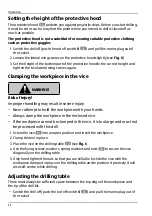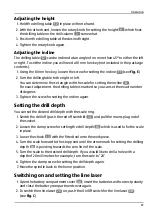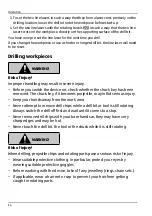
Safety
10
c)
Keep children and other persons away from the power tool while
you are using it.
If you are distracted, you could lose control of the
power tool.
Electrical safety
a)
The connector plug for the power tool must fit in the socket. The plug
must not be modified in any way. Do not use any adapter plugs in
combination with power tools with protective earthing.
Unmodified
plugs and matching outlets will reduce the risk of electric shock.
b)
Avoid body contact with earthed surfaces like pipes, heaters,
stoves and refrigerators.
There is an increased risk of electric shock
if your body is earthed or grounded.
c)
Keep power tools away from rain or moisture.
Water entering a
power tool will increase the risk of electric shock.
d)
Do not use the cord for improper purposes such as for carrying
the power tool, for hanging it up or for pulling or unplugging
it from the socket. Keep cord away from heat, oil, sharp edges
and moving parts.
Damaged or entangled cords increase the risk of
electric shock.
e)
When operating a power tool outdoors, use only extension cords
that are suitable for outdoor use.
Use of a cord suitable for outdoor
use reduces the risk of electric shock.
f)
If operating the power tool in a damp environment cannot be
avoided, use a RCD.
Use of an RCD reduces the risk of electric shock.
Safety of persons
a)
Be careful, pay attention to what you are doing and approach
work with a power tool in a reasonable manner. Do not use
any power tool if you are tired or under the influence of drugs,
alcohol or medication.
A moment of inattention while operating
power tools may result in serious personal injury.
b)
Wear personal protective gear and always wear safety glasses.
Protective equipment such as dust mask, non-skid safety shoes, hard
hat, or hearing protection used for appropriate conditions will reduce
personal injuries.



